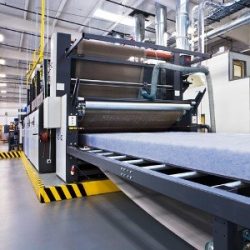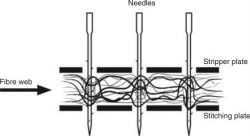The discovery of mechanical bonding processes was a minor revolution for manufacturing and many other industrial applications. It consists in creating a chemical bond capable of preventing the fragmentation of molecular structures and causing them to lock together. It is a form of adhesive bonding in which one material becomes physically bound to the surface of another. The single greatest benefit of this process is the extra strength it imparts, thereby enhancing resistance to corrosion and physical damage.

Image Credit
History
Mechanical bonding began with the first synthesis of catenanes and rotaxanes in the 1960s and involves altering the chemical make-up of their sub-components to create new interlocking molecular structures. The process increases the phenomenon known as steric hindrance which is seen in intermolecular interactions and causes chemical reactions to slow down. Simultaneously there is an increase in non-covalent interactions which are essential for the maintenance of the structures of large molecules. Once formed, a mechanical bond is very difficult to break.

Processes
At a basic level, the adhesion of paper and board is an example of mechanical bonding but in the industrial context it is a highly specialised procedure. There are several methods of achieving the result including thermo-compression bonding, needle-punching and hydro-entanglement which interlaces fibres using high-pressure water jets. One of the most effective processes is the use of a plasma spray which heats and softens the particles of a coating substance then jets them onto the substrate to which they adhere, cooling to form a permanent covering. For pioneering UK companies like Poeton this is now a routine technology but many improvements have been, and continue to be, added to the process, extending the benefits and possibilities.
Uses
Achieving a mechanical bond guarantees a very strong adhesion between the materials, be they industrial steel, titanium, cobalt or a vast range of other possibilities including plastics and fibrous materials. Surface preparation is important but no more than in other methods.
Mechanical bonding is also versatile and capable of joining materials with very different properties – like metal and glass. By thoroughly permeating their contact plane it exploits the microscopic roughness of the surfaces to achieve high friction between the two, locking them together.
Mechanical bonding differs from chemical (covalent) bonding in that there is no exchange of electrons during the adhesion process and yet mechanical bonding is considered a stronger and more enduring method of joining (or coating) materials.
